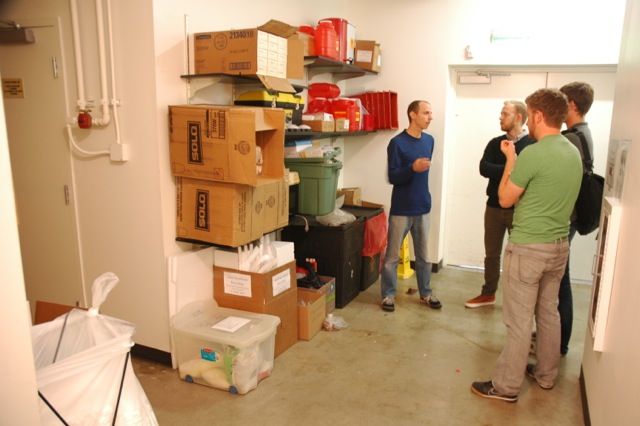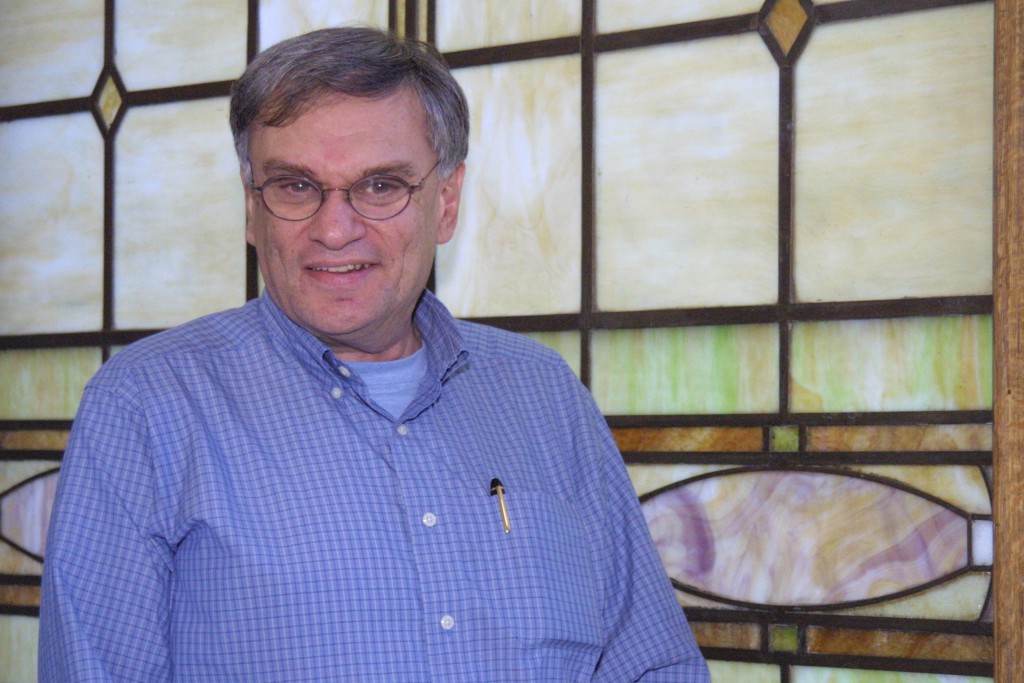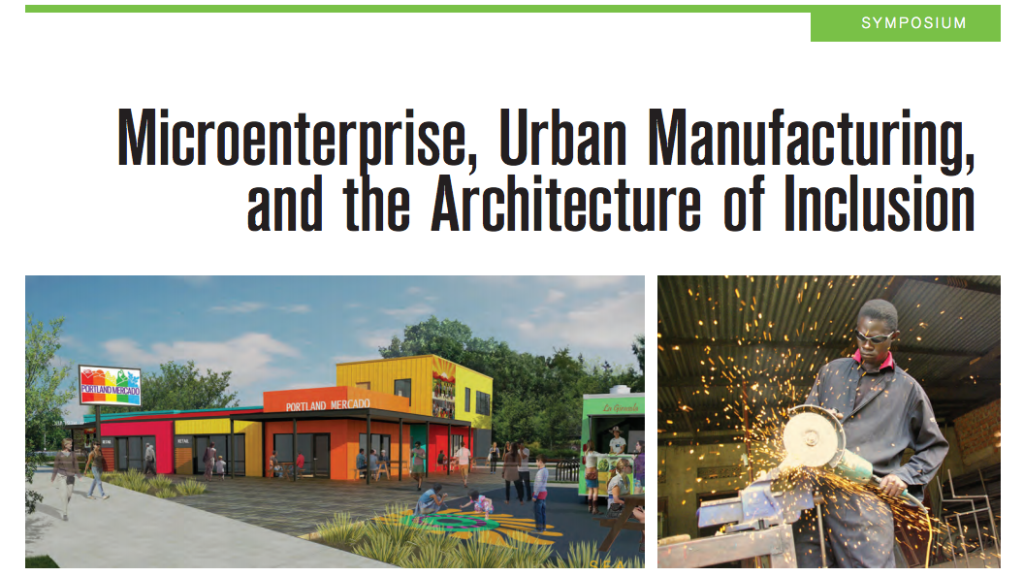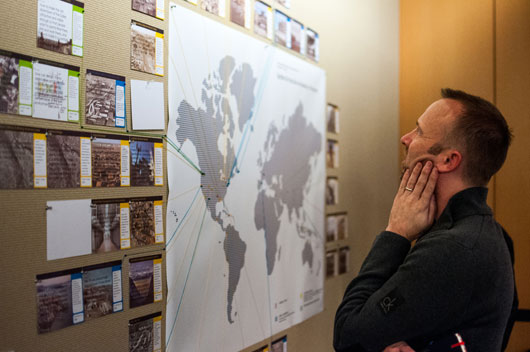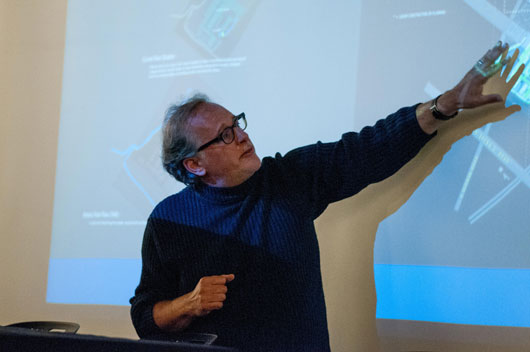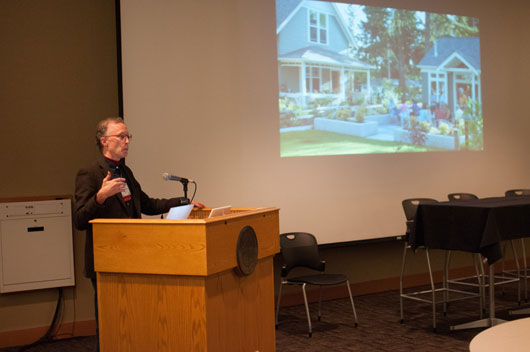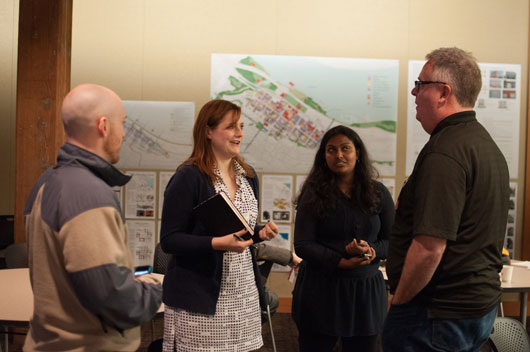Professor Howard Davis Launches UO Portland Design Assistance | Design Build Collaborative
A partnership between UO students and faculty in the UO Department of Architecture, and a collaboration with MercyCorps Northwest and the Collaborative for Inclusive Urbanism
Professor Howard Davis, of the University of Oregon Department of Architecture has collaborated with MercyCorps Northwest under executive director, John Haines, and the Collaborative for Inclusive Urbanism to launch a UO Portland Design Assistance | Design Build, a partnership between UO students and faculty in the UO Department of Architecture.
Called by Professor Davis “a unique collaboration between the UO and MercyCorps Northwest–two Portland neighbors that have not interacted much up until now,” the venture was publicly announced on December 9, 2014 with invitations for collaborators to come on board and a giant Jenga party at Portland’s collaborative maker space, ADX, the venture welcomes all interested design students, mentors and supporters from allied fields to join and engage with the project.
Along with Professor Davis, UO Portland Design Assistance | Design Build is a volunteer group comprised of students and alumni working alongside MercyCorps Northwest to research, design, and build architectural installations that will benefit the community of Portland. Members of the professional community—on a pro-bono basis—professional architects, engineers, and makers will pair with architecture students and recent graduates of the UO Department of Architecture in Portland and the program’s urban architecture focus to provide design and build services for underserved micro-entrepreneurs to help establish their businesses. The group believes in encouraging small industry to create a healthy mix of consumption, production, and vibrant public places to live, work and play in the city of Portland.
Professor Davis notes “The idea [for UO Portland Design Assistance | Design Build] has developed over the last year, through discussions with MercyCorps Northwest and a series of focus groups with their micro-entrepreneurs. The focus groups were run by then-students Annie Ledbury and Drew Shreiner. Through the focus groups we realized that there is a need for this kind of service, dealing with physical space, to supplement the assistance in forming and running a business that MercyCorps NW already makes available to the people who get small loans from them. Through several planning and brainstorming meetings we developed this idea. The symposium on industry and micro-enterprise we had in the fall, and my own design studio on the topic, also were a big boost to the effort.”
UO Department of Architecture in Portland alumni and a volunteer organizer for UO Portland Design Assistance | Design Build, Ledbury comments that the group is “committed to balancing the social, economic, and environmental aspects of their projects.”
Ledbury explains “we’ve been working for the last year on the development of a program where MercyCorps NW micro-entrepreneurs can be helped with issues relating to their workspace—availability of space, location, design, renovation, and beyond.”
Currently, in the getting up-and-running stages, the group has been working towards developing a website through which people who would benefit from help with projects and a system which will match up students with micro-entrepreneurs to provide direct consulting assistance.
Professor Davis said the website will “go online sometime this winter, and will be linked to MercyCorps Northwest’s site.” MercyCorps Northwest executive director, Haines, noted, “We will populate our website with the design elements that helped each business so that many can learn from the examples.”
When asked about current and potential future projects, Professor Davis commented, “A student is ….working with MercyCorps Northwest on a building in east Portland that MercyCorps Northwest has recently acquired–looking at the neighborhood around the building and trying to understand how the building may better act as a catalyst for economic development in the neighborhood. It is still a little early to tell for sure, but one idea is some kind of weekend event combined with a design-build project, all run by students, at the site of the building.”
“Hopefully the collaboration will be of benefit to small-scale micro-entrepreneurs in Portland,” continued Professor Davis, “helping them to find and renovate space (many of them do not have money for or access to professional services); and it will provide UO students with experience working on real projects and the opportunity for community engagement.”
Asked to comment about UO Portland Design Assistance | Design Build and MercyCorps Northwest collaboration, Haines said, “MercyCorps Northwest works with over a thousand entrepreneurs annually. Many have come to value the design and strategic advisory assistance they get from architecture students on the best use of their often limited space…. The student teams get real world work experience, and our client businesses get advice they need.”
